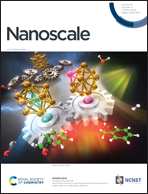Tunable 2-D magnonic crystals: effect of packing density
Abstract
Magnonic crystals, periodic arrays of magnetic structures, have emerged as a promising platform for manipulating and controlling spin waves in magnetic materials. Magnetic antidot nanostructures, representing 2-D magnonic crystals, are versatile platforms for controlling and manipulating magnons. In this work, we systematically investigate the effects of inter-hole spacing and lattice (rhombic and honeycomb) arrangements on the dynamic properties of Ni80Fe20 antidot structures. The dynamic responses of antidot lattices of fixed hole diameter (d = 280 nm) and inter-hole spacing (s) between 90 and 345 nm are investigated using broadband ferromagnetic spectroscopy. Multiple resonance modes sensitive to s are observed due to the inhomogeneous internal field distribution induced by the presence of holes. There is a marked variation in mode frequency, mode intensity and the number of modes for rhombic antidot lattice as the inter-hole spacing and applied field direction are varied. Our experimental results are in good agreement with micromagnetic simulations. Our findings may find application in the design of magnonic-based devices.



 Please wait while we load your content...
Please wait while we load your content...